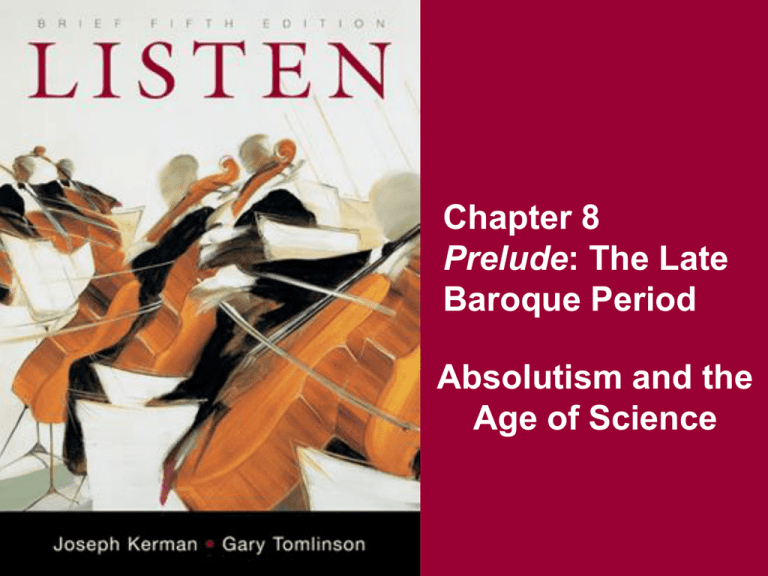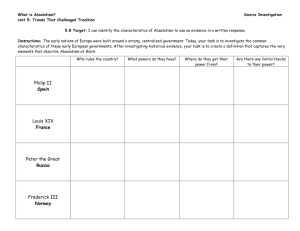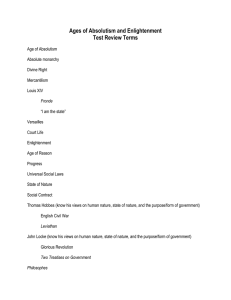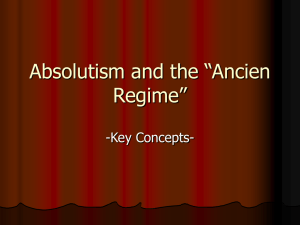Chapter 8 Baroque Period Absolutism and the Age of Science
advertisement

Chapter 8 Prelude: The Late Baroque Period Absolutism and the Age of Science Key Terms Baroque Absolutism Age of Science Theatricality Late Baroque Timeline Absolutism and the Age of Science Age of Absolutism • Divine right of kings–rise of absolute monarch • Pomp and splendor of royal courts Age of Science • Development of scientific method, habits of scientific experimentation and proof • New understandings of natural world stimulated technology & philosophy Important dualism–pomp & extravagance vs. system & logic Age of Absolutism Decreasing power of Church contributed to rise of absolute monarchs King Louis XIV of France the most powerful monarch in European history Louis celebrated himself in opulent, extravagant art, architecture, and music Lesser kings and nobles emulated pomp and splendor of French court Age of Science Use of scientific method led to many new discoveries • • • • Theory of gravity (Newton) Laws of mechanics (Newton) Invention of calculus (Leibniz & Newton) Telescope and microscope Discoveries influenced both technology and philosophy • Advent of empiricism–Descartes, Locke, Hume Art and Absolutism Patronage of arts rose to new heights, especially in France All aspects of French life revolved around royal court French artists expected to symbolize majesty of the state in their work Versailles the largest, most imitated palace in history Music and art also epic in scale The Music of Absolutism Music required for all aspects of court life Large festive orchestra (with trumpets & drums) used to pay homage to nobles Opera closely associated with royal courts • The most lavish, spectacular entertainment of the Baroque era • Stories about heroes of mythology & history • Often allegorical tributes to noble patrons • Grand amalgam of many arts–music, drama, art, architecture, dance, etc. Art and Theatricality Baroque obsession with emotions & emotional extremes Led to fascination with the theatre All arts take on a dramatic quality with theatrical gestures, strong contrasts Baroque highlights— • Theatre–Shakespeare, Corneille, Racine • Art–Tiepolo, Guercino, Rembrandt • Music–invention of opera Science and the Arts Impact of science on many arts In painting— • Precise, realistic use of detail & perspective (scientific observation) • New attention to light (optics) In architecture— • Symmetry & geometry of palaces (Versailles) • Human regulation of nature (formal gardens) In theater • Mathematics of set design (Bibiena) Science and Music (1) Scales tuned (tempered) more precisely • All 24 major & minor scales now usable More systematic, logical use of harmony • Stronger pull toward tonic New regularity in rhythm • Strong beat, steady meter, repeated patterns Use of orderly formal schemes • Musical time divided and filled systematically • Allowed long pieces to retain logic, coherence Science and Music (2) Even musical expression was affected by scientific thought • Emotions now analyzed & classified (Descartes) • Systematic use of specific melodic motives, rhythms, & keys to express each emotion (Doctrine of Affections) • Rational effort to maximize expression





